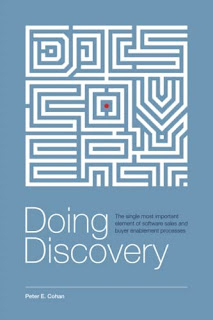How To Improve Your Sales Calls in Five
Minutes
/TLDR: Our recent
Professional Skills training has highlighted that most sales teams are
not routinely debriefing and asking each other for feedback. Here is a
simple, quick process you can use to get tips from your colleagues on how you
can improve for the next sales call.
As we’ve
been delivering our Professional Skills training throughout our client base in 2021-21,
we’ve taken the opportunity to informally ask a number of questions.
One
question is “how often do
you debrief with the FSR after a customer sales call?”
“We always debrief” is the common reply.
“What do you cover in the debrief?” we respond.
“Oh, we agree on Next Steps and Account Strategy!” says
the SE.
“What about discussing what happened during
the call? The good, the bad and the ugly?”
“Well, we hardly ever
make time to talk about that. There’s always another call..”
We believe
you are missing out on a wonderful opportunity for improvement. Just a 5-minute
investment into a true call debrief can make a major difference in your overall
team performance and personal productivity.
The T3-B3-N3 Process.
The process
is simple. You ask the FSR (and anyone else who sat in on the call) three
simple questions. Adjust appropriately for culture and title.
|
T3 – Top
3
|
What are the top three things I did in
the sales call that I should repeat every time I am in that kind of
situation?
|
|
B3 – Bottom 3
|
What are the three things I did in the
sales call that I should never ever do again?
|
|
N3 – Next 3
|
What are three things I did not even do
in the sales call that I should consider including next time?
|
It’s
a non-threatening collection of positive reinforcement, constructive feedback
and new ideas mixed in with a little “don’t
do that”. Now you need to take notes, try to get specific examples (my
example: “When you interrupt the customer before he finishes asking his
question it shows a lack of respect and professionalism. Next time pause and
count to two before you answer”) and if appropriate, put a plan in place to
fix or to reinforce the behavior. Then follow-up with that person within a few
weeks – that way they will give you some more feedback once they know you are
listening to them.
Feedback is
a gift, and together with learning more about your own solution, it’s the #1
way you have of improving. You may not always like what you hear, but it is
still a gift.
Advanced
T3-B3-N3
Substitute
“we” for “I” in the previous set of questions. As in: “What are the top
three things we did in the sales call that we should repeat every time we are
in that kind of situation?”
Master
Level T3-B3-N3
Ask the FSR
– “would you like to hear your T3-B3-N3 list?”
Sales Engineer Manager Call To Action
85% of
Sales Engineers (to use the generic term) across the globe report that they
want more feedback from their Manager. 65% of Manager’s feel that they give
sufficient feedback. Get engaged, speak up and make a difference.
Summary
After the
next sales call – if you want more than “you
did good” or the truly terrible “it
was fine”, try the T3-B3-N3 approach and see what happens! You will be
amazed, and a little scared, by the responses you receive – especially once
you’ve established some trust with that individual.







